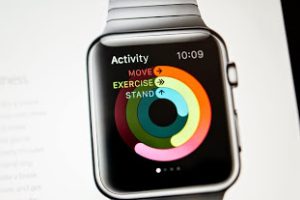- Free Consultation: 866-966-5240 Tap Here To Call Us
Could Apple Watch Data Prove Your Personal Injury Case?

Trial attorneys learn early in their careers that each group of jurors is a blank canvas waiting for the evidence that will paint a picture of events as their clients seek to portray them. It is the task of the attorney to convince the jury that allegations are facts that can be believed and relied upon.
Needless to say, personal injury cases offer the greatest challenge to lawyers who must prove the effect an accident had on a client’s ability to go about his or her daily activities. In the past, attorneys resorted to commissioning professionally prepared videos portraying what purported to be an average day-in-the-life of the accident victim. The video could be played in court to offer jurors visual proof to support the testimony of the victim.
Wearable Data Offers an Alternative to Videos
The recent introduction of the Apple Watch to consumers represents the latest step in a technology trend that began when GPS capability was introduced into cellphones. The ability to track a person’s movements by monitoring the location of their cellphone could prove to be valuable in a criminal case to establish an alibi for the defense, or it could be used by the prosecution to place someone at the scene of a crime.
Of course, as with any data derived from a traceable device, other proof would be needed to counter the argument of a skilled attorney that all the data proves is the location of the device at any particular moment. It is not conclusive proof that the device was worn or used by a particular individual at the time it was being traced.
Wearables, such as Apple Watch and Fitbit, offer data that might be of use in proving damages in accident claims. For example, heart rate, distances and other such data could be offered as proof that an individual’s daily physical activities have diminished following injuries suffered in an accident. Unlike a day-in-the-life video that is limited in the number of days or hours that can be depicted, data from wearable devices can be gathered to show activity over longer time periods covering weeks or, depending on the type of case, even months.
The Importance of Authentication
The information obtained from a wearable device may be the piece of evidence that jurors hearing accident claims need to award compensation to plaintiffs trying to prove that a personal injury has affected their ability to function as they did before. The problem lies in proving the legitimacy and accuracy of the data.
As in cases involving GPS devices where a map tracing a person’s every step from one location to another might be a very persuasive in convincing a jury that someone was exactly where they claim to have been, data from wearable devices is subject to interpretation. An increased heart rate picked up by an Apple Watch might be used to prove that the wearer was engaging in strenuous activity. It does not, by itself, prove who was wearing it at the time the data was collected.
Even with new technology, the traditional skill of the trial attorney in laying a proper foundation for the introduction of evidence is as crucial as ever. The data speaks for itself, but proof of its authenticity and its application to the party introducing it to support or refute accident claims must also be presented at trial.
Use of Wearable Data in Its Infancy Stages
Courtroom use of data collected from Fitbit and other wearable devices is in its infancy stages. Judges and lawyers are still learning how and when it can be used properly and to its fullest advantage. One issue that lawyers expect will eventually arise from the collection of this data will be efforts by opposing parties to compel its being turned over by the device wearer as part of routine discovery in personal injury cases.
Chances are that judges will compel disclosure of the data on the theory of fairness. Its availability as proof of damages for the wearer of the device should make it available to the opposing party as well.












